The Province of Kanchanaburi is the third largest in area (behind Korat and Chiang Mai) but it has a low population density with almost the entire population (about 900K) concentrated in the eastern third of the area. It is a major contributed to the sugar cane and rice production of the country.
https://en.wikipedia.org/wiki/Kanchanaburi
Modern development has the main route through the province (Rte #323) providing a solid line of businesses from Ban Pong to the city of Kanchanaburi. West of there, the population thins rapidly. Just a few kilometers west of the famous bridge is the largest RTArmy base, the HQ of the 9th INF DIV at Lat Ya.
Two major rivers — currently named the Kwae Yai and Kwae Noi (literally meaning large (yai) and small (noi) tributaries — flow in parallel across the entire length of the province. At the point of the old walled city, they converge into the Mae Klong with then flows on the the Gulf of Siam. Surprisingly, these rivers are not major avenues of commerce. Perhaps the two major upstream dams just keep the water level too low for such activity. There is also almost no recreational boating except as described in Section 19b.
The restored portion of the TBR from Nong Pladuk to Nam Tok is of little commercial value with only one freight transfer station near Tha Muang.
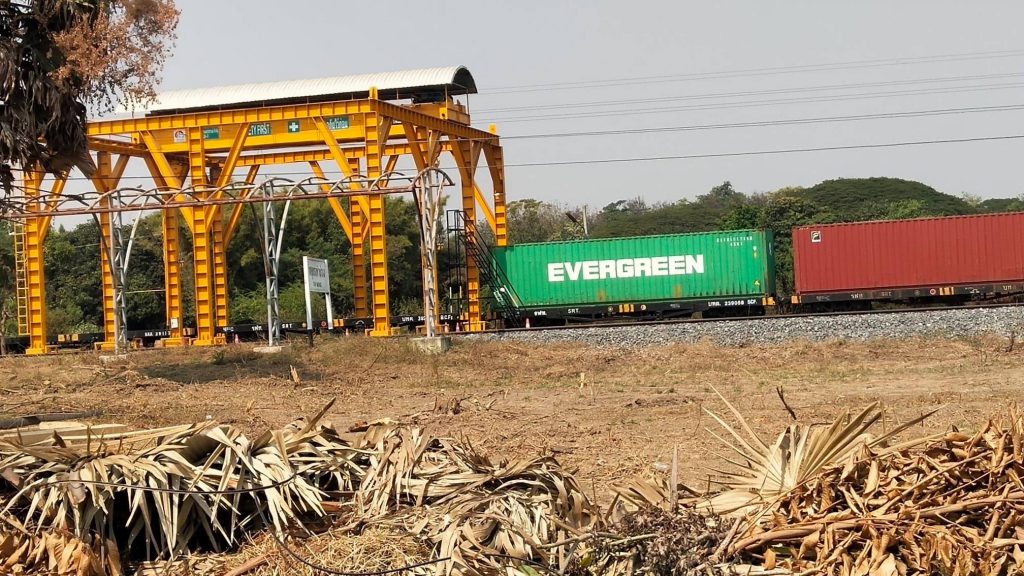
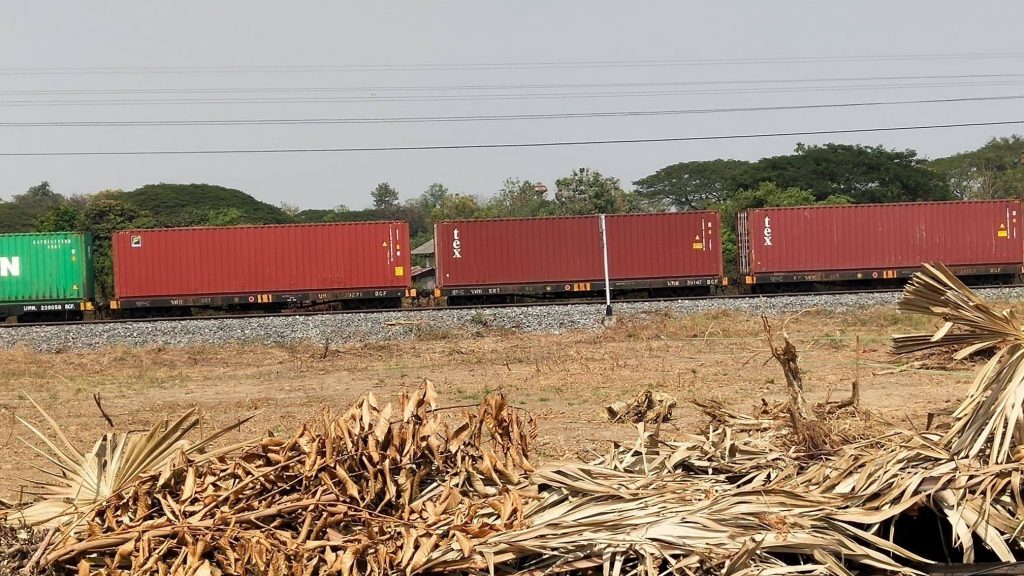
The province is best known for the day-trip opportunities for the Bangkok city dwellers to enjoy a few hours in natural and cultural surroundings. There are a myriad of temples and other culturally related sites within easy drive of the capitol. Some of these day-trippers are interested in the historical events that put KAN on the world map with the TBR, but most are not. It is the foreign tourist on whom the vendors and tour operators stake their fortunes. One very popular event for Thais and tourists alike is the annual ‘light and sound’ show at the bridge. This purports to tell a sanitized version of the events of 1942-43 and culminated with a fireworks show in which virtual bombers destroy the bridge. As fun time is had by all; except the POWs and Asian workers who were enslaved there. None the less, without commercialization, the history of this era would likely not continue to be preserved.
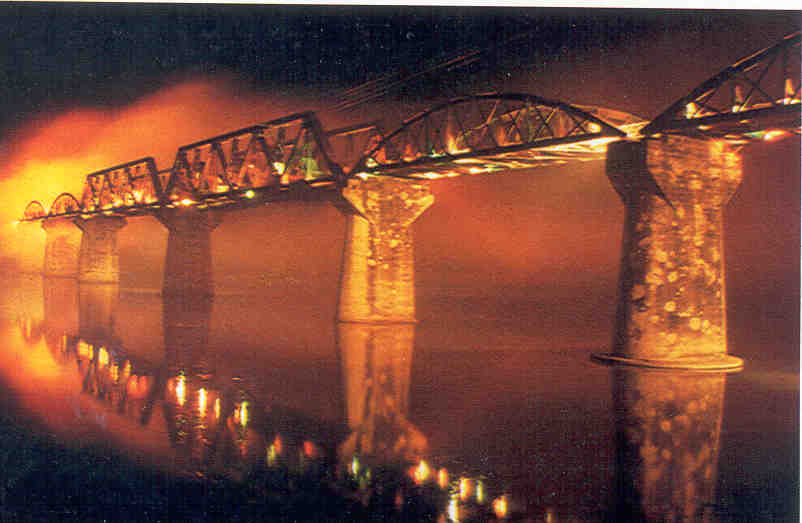
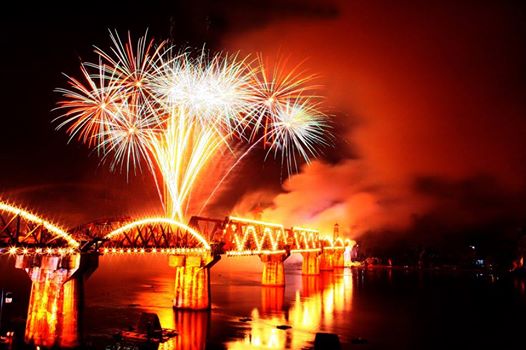
Daily a Thai Railway Authority train runs from Bangkok over the TBR route mainly carrying day-trippers. It is indeed one way to continue to keep the legacy of the TBR alive.
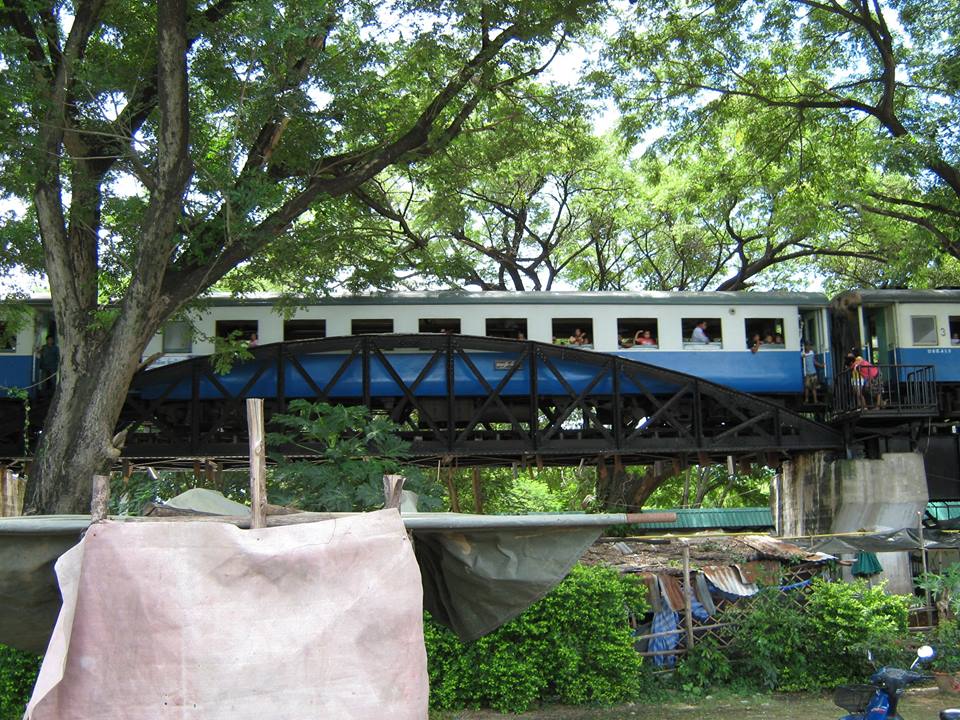
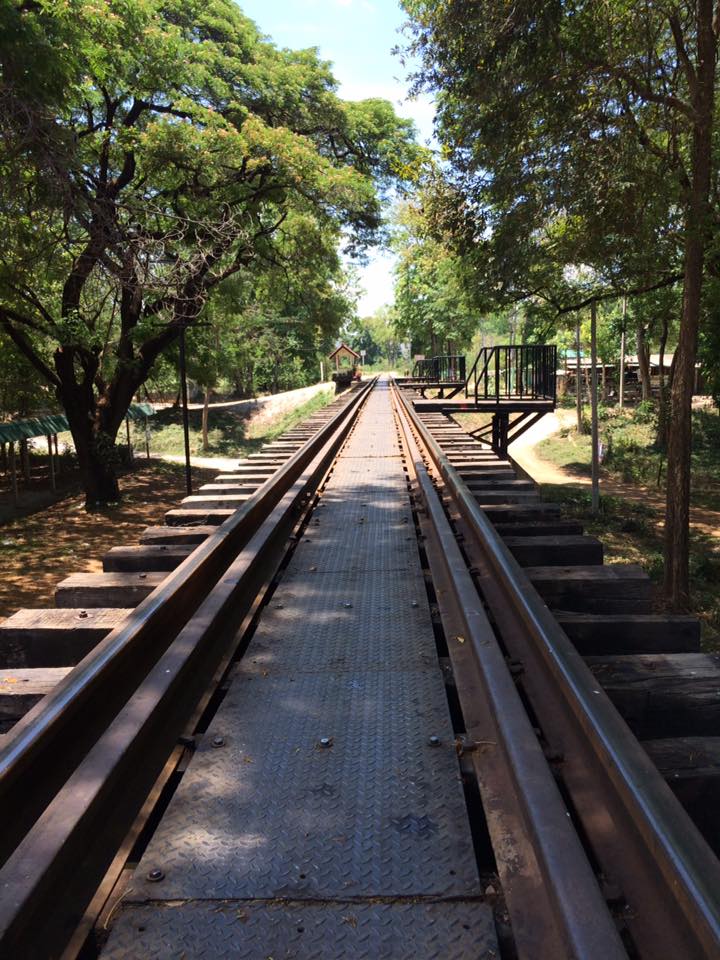
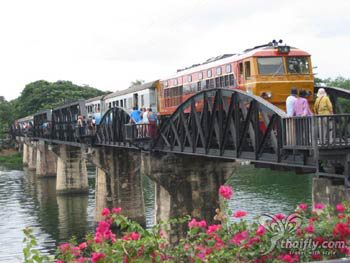
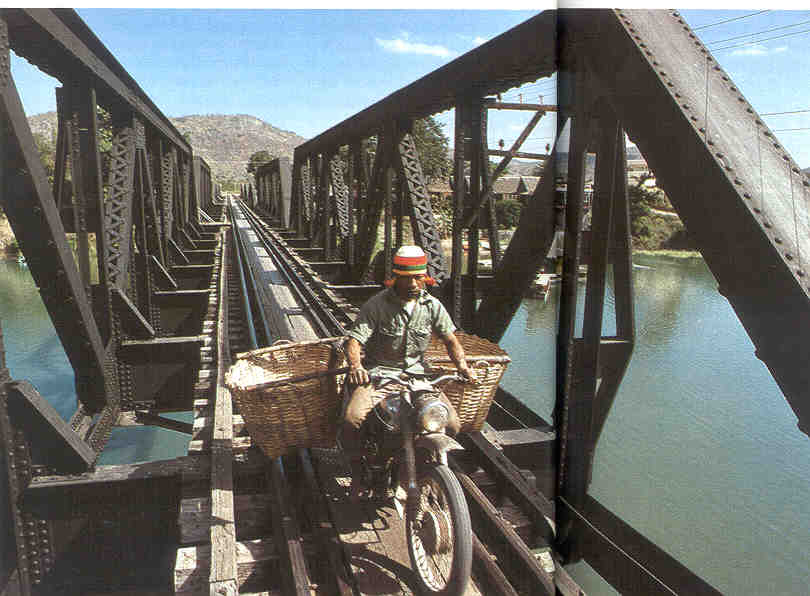
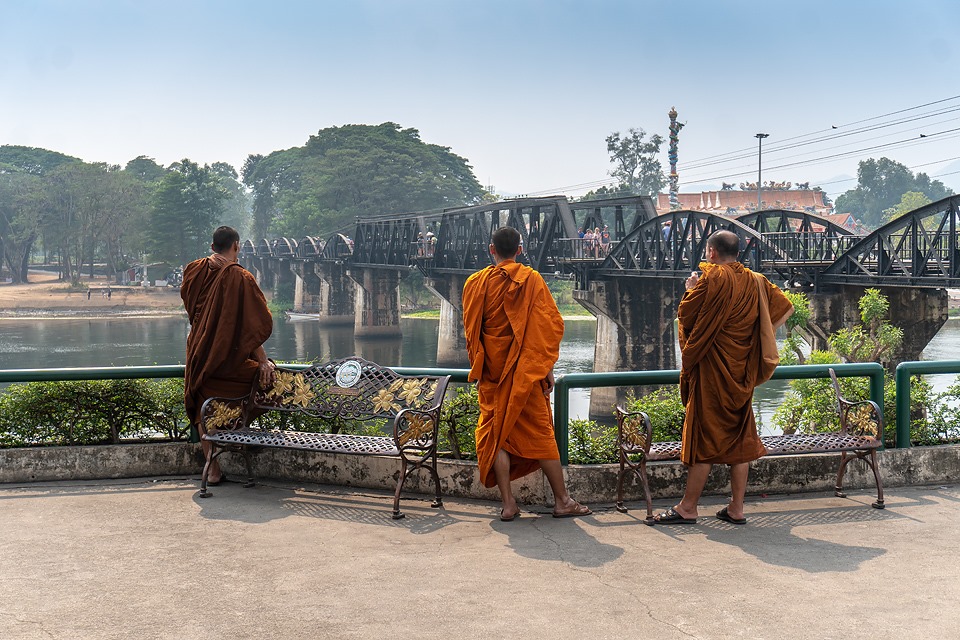
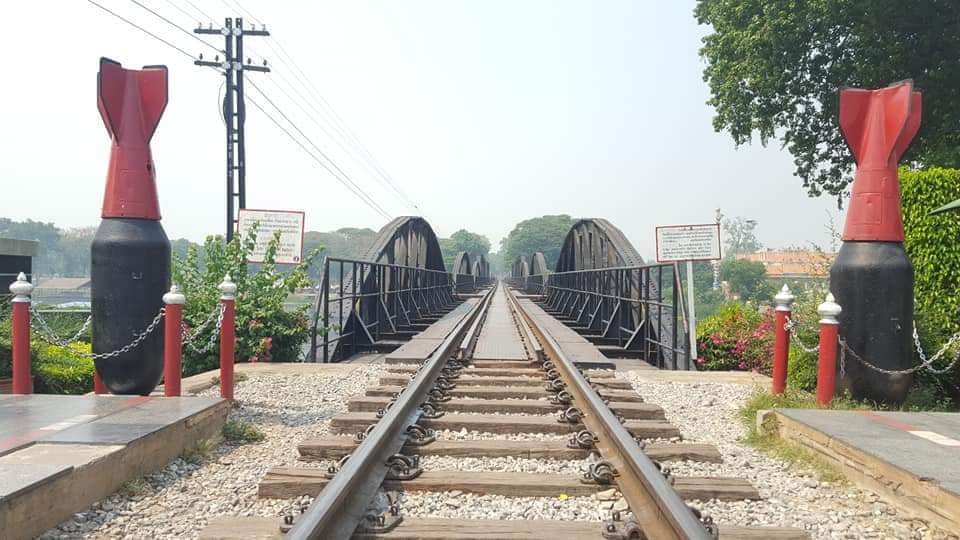
The Bridge is visited by tens of thousands each year who spend liberally in the nearby markets and restaurants. But one such tourist was different. Takashi Nagase was an IJA soldier on the TBR in WW2. In the mid-1980s, he returned with a mission of peace and reconciliation. He funded a ‘Peace Memorial” not far from the Bridge. His story is told here:
https://apnews.com/article/16e924bb44727346252104dbd417a000
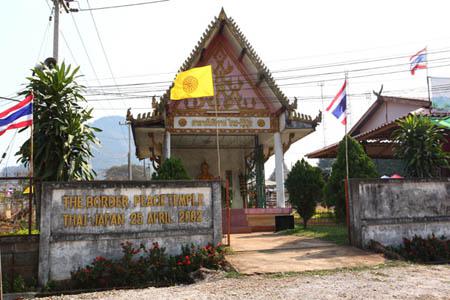
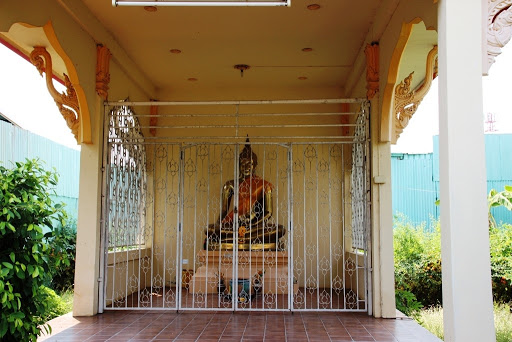
It also seems that too few stop at the US VFW memorial next to the bridge.
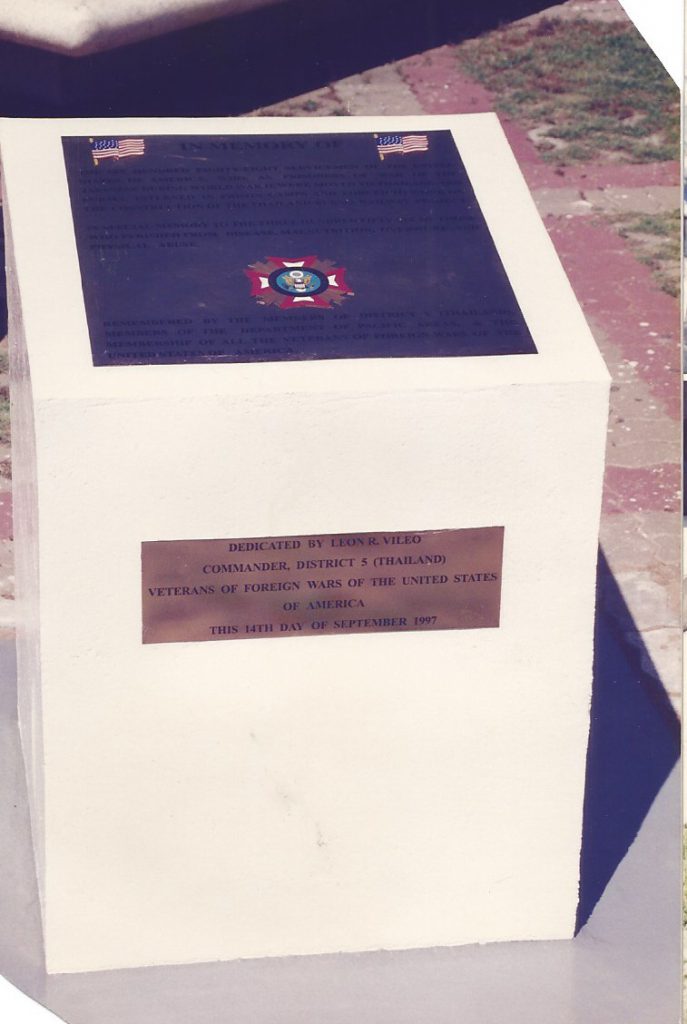
In Section 29.2, I discuss the complex interaction between history and commercialization that occurs particularly at the site to the iron bridge. There is a rather strange confluence of events that leads to confusion among the various competing entities.
In short, the 1942-45 events that encompass the Thai-Burma Railway are not openly acknowledged as part Thai history. Although they physically occurred in Thailand (and Burma), they were perpetrated by one group (Japanese) on other groups (Allied POWs and workers from other Asian countries). Thais had only a brief and rather minor involvement in this entire episode of history. So while the Tourism Organization of Thailand (TOT) is happy to reap the financial benefits of the tens of thousands of tourists who visit the area, they are disinclined to publicly display information as to the underlying atrocities that occurred here.
Only a few references to the history of this time period can be found. Even the displays at the CWGC cemeteries speak only to the contents of those places and not the larger history behind them. The most vivid linkage is the original JEATH museum adjacent to the large Buddhist temple in the center of the city. It rather authentically –if in a somewhat sanitized manner — depicts the events and hardships of that era. The same cannot be said for the more recent enterprise that usurped the JEATH name located near the iron bridge nor the developing display on the opposite bank of the river at the bridge. These latter two are purely designed to separate people from their money under the guise of displaying history — in as confusing a manner as could be conceived.
The single most accurate and extensive depiction of the events of this era can be found at the Thai-Burma Railway Centre (TBRC) located next to the downtown war graves cemetery. The Australian founder has managed to tell as complete a story in as accurate a fashion as is humanly possible. This was done by means of a privately funded enterprise with no government involvement (meddling?).
A third, more limited, story is related about the events at HellFire Pass about 100 kilometers beyond the bridge at a memorial that that is funded and overseen by the Australian government.
One reason for the development and expanding nature of this website is to relate as full and accurate a picture of the events of 1942-45 as can be compiled and to place them in the context of world events of that period.

I’m not quite sure I understand what “calendar” you are referring to.
Please explain.
Magnificent web site. Lots of helpful info here.
I’m sending it to several buddies ans additionally sharing in delicious.
And of course, thank you in your sweat!
THX
any comments would be appreciated
esp if you find any errors
Hello There. I found your blog using msn. This is an extremely well written article.
I will be sure to bookmark it and return to read more of your
useful info. Thanks for the post. I will definitely comeback.
I hope you will enjoy all
Please continue to comment as you read.
THX